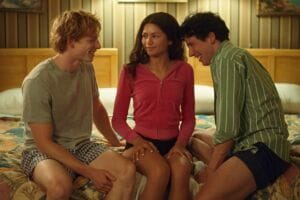In the grand tradition of Rope and Birdman, war film 1917 is made to look like it was all filmed in one shot, even though it wasn’t. It made sense for Hitchcock’s Rope, when film cameras couldn’t shoot for more than ten minutes, but modern movies choose the faux-one-shot conceit when they’re capable of pulling off the real deal. Why is that?
For one thing, when movies are actually filmed in one shot, they’re less easy to show off. Actual one-shot films, like Alexander Sokurov’s experimental Russian Ark, have to make technical concessions to achieve their goal: you can’t expect an epic, visually explosive shot to go perfectly right for two hours straight. So the real deal usually looks understated—the filmmakers, by necessity, sacrifice grandiosity for subtlety, and the one-shot conceit plays into the movie thematically more than it wows the audience. Movies like 1917, on the other hand, are easier to market. This WW1 film is unrelenting! The horrors and thrills never end, not even for a cut!
There’s a risk that this’ll turn the reality of war into a gimmicky theme park ride, and 1917 definitely approaches that line. The camera has a tendency to trail away from the action and into, for example, the entrails of a horse, shoving your face in the horror rather than letting you see it naturally like the soldiers would—thus defeating the purpose of “putting us in their shoes”, like a one-shot film is ostensibly supposed to do. Unless WW1 soldiers were rubbing their faces in gore out of curiosity, 1917’s camera is a bit overeager.
This never becomes a nagging problem for the movie, though. A lot of 1917 is just walking and waiting—it might not seem particularly exciting from that description, but when you’re counting every second until a combatant runs out of ammo, peeking out of cover becomes a tremendous act of courage. The walking, too, becomes more of a trial than a stroll: we feel each minute of trudges through the trenches, dragging exhausted bodies through the suffocating halls of war. 1917 soars when it uses its faux-one-shot conceit to accentuate time and distance, like when the camera relentlessly pulls back from the protagonist as they fail to catch up. The jaws of war won’t stop and neither can you.
At times, it’s reminiscent of Christopher Nolan’s Dunkirk, which depicted time and place as war’s uncaring gods. In Dunkirk, whether you were a hero or a dead body was determined by where and when you happened to be, regardless of your bravery or prowess. The fate of a toy solider was predicted by when it was wound up. Dunkirk’s style stressed this fatalism at every turn—1917, on the other hand, doesn’t have a main point that constantly benefits from its style. Writer/director Sam Mendes is mostly interested in sharing the story of his grandfather, and the faux-one-shot is draped on top of it like awards bait. That doesn’t mean it doesn’t look good—this is Roger Deakins’ cinematography, after all, so there’s some spectacular lighting and shot compositions—but there are long stretches where the one-shot seems superfluous.
At worst, it’s distracting. When the camera wanders behind a tree and the whole screen goes dark for a moment, it’s a little too clear that a secret cut just occurred. Simply cutting to another shot would’ve been less conspicuous. Better to focus on the script by Mendes and Krysty Wilson-Cairns, then, which is earnestly proud of family, commendably pessimistic about war, and beholden to the war trope survival guide only about half the time.
★★★½ (3.5/5)




